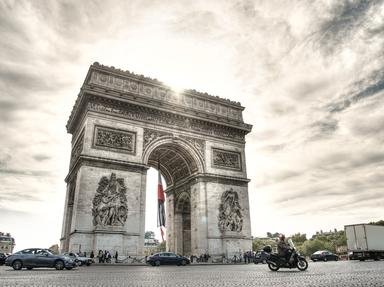Quiz Answer Key and Fun Facts
1. The southern part of Gaul, which is now France, was annexed by the Romans between 125 and 121 BC. Which one of the following was NOT one of the lasting contributions from roughly 500 years of Roman rule?
2. In 1209, Pope Innocent III launched the twenty-year Albigensian Crusade against which group of Christians in southern France?
3. For most people, the Tour de France brings to mind the annual cycling race, but it also refers to a French organization called the Compagnons du Devoir et du Tour de France, whose first traces date from the 13th century. Which of the following did they provide?
4. In 1498, Louis XII ordered the expulsion of all Jews from Provence. Which independent enclave surrounding Avignon, France provided them refuge?
5. A form of discrimination similar to that experienced by "untouchables" under the caste system in India existed from the 16th century in what is now southwest France and northern Spain.
6. In 1675, the Revolt of the Papier-timbré (literally "Stamped paper") or the Revolt of the Red Bonnets broke out in Brittany, France's northwestern region. What were the Bretons protesting?
7. By the time of the Revolution of 1789, French had become the primary language for the majority of people in the country?
8. The Canut Revolt of 1831 in Lyon, France was one of the first large worker uprisings of the Industrial Revolution. It involved workers from which elegant textile trade?
9. After losing the Franco-Prussian War in 1871, France ceded to Germany 1,694 villages and cities in which region famous for its quiche?
10. In 1939, nearly half a million refugees from which Iberian civil war were held in internment camps in France?
Source: Author
pitegny
This quiz was reviewed by FunTrivia editor
bloomsby before going online.
Any errors found in FunTrivia content are routinely corrected through our feedback system.
